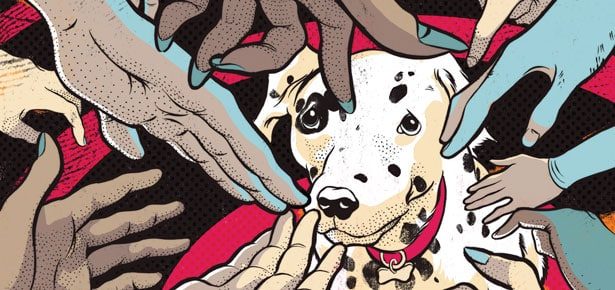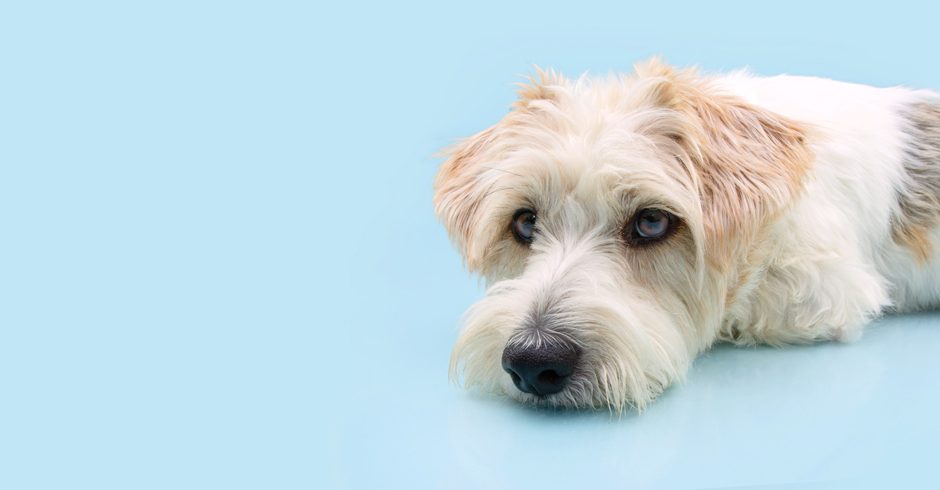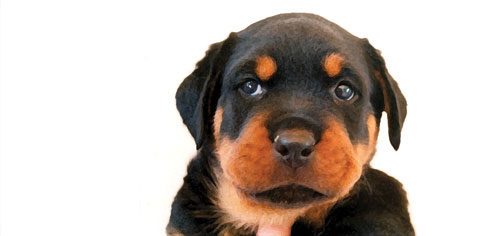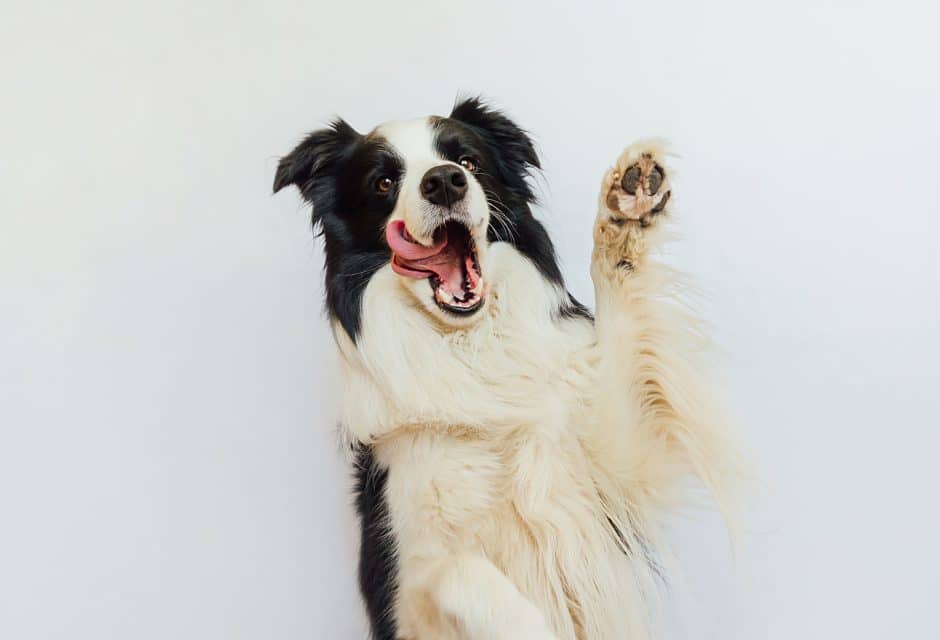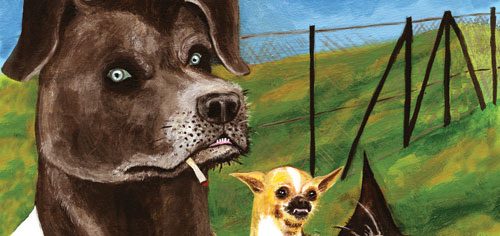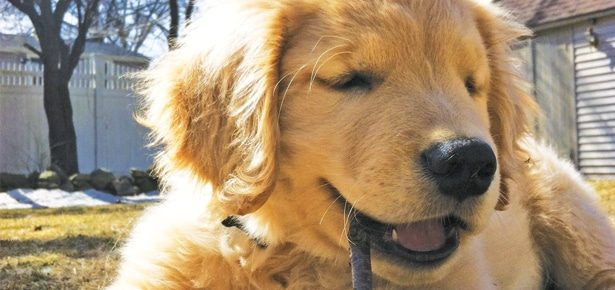
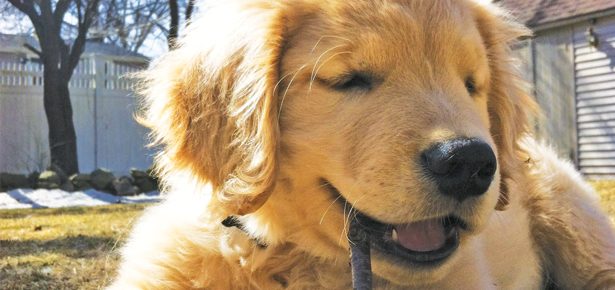
How to Help a Blind Dog Adapt
Tips for living with a visually impaired dog
It was a beautiful day in coastal Oregon when fourteen-year-old Lisa and her brother Joe decided to go for a swim in the ocean. The tide changed suddenly, turning their lively voices into terrified screams as brother and sister realized they were being pulled into deep water. Joe managed to swim back to shore, but could only watch as his sister was pulled farther away from him.
Alerted by Lisa´s screams, a yellow Lab unexpectedly jumped into the water and started paddling strongly towards her. “Call my dog! His name is Norman. Call his name,” the Labrador´s owner yelled to Lisa from the shore. Guided by Lisa´s voice, Norman valiantly reached her and towed the exhausted teenager back into safety.
This real life story becomes even more miraculous when you learn that Norman was completely blind.
Finding out your dog is going blind can be devastating but, as with Norman in Oregon, most dogs can get along well—and even thrive—without being able to see. The fact is eyesight is not a primary dog sense. By making a few minor changes to the way we interact with them, a visually impaired dog can adjust quite well to a household’s lifestyle.
“A person with a blind dog needs to adapt their own life in many ways to the dog’s disability, yet these things are neither hard nor challenging—in fact, they are easy and even fun for the owner,” says Gayle M. Irwin, a speaker, rescue pet advocate, and author of four books about blind dogs.
Here are six tips from experts on how to make a few changes to enhance your vision-challenged dog’s life and help him lead a normal life:
Blind Dog-Proof Your House. Once your dog loses his eyesight, he will at first feel extremely confused about his surroundings. Award-winning dog trainer and author Caroline D. Levin, (who also, incidentally, worked as part of the veterinarian team who attempted to restore Norman’s eyesight—Lisa´s parents were so grateful for Norman’s lifesaving heroics that they provided Norman with a visit to a veterinarian eye doctor to see if his vision could be restored; unfortunately it could not be.), suggests spending some time guiding your dog around the house and fencing off any possible hazards, like a pool and stairs. “Just make sure that dangers are lessened in the beginning because after a while, a blind dog develops a mental map,” she says. Miki Saito, a certified dog trainer specializing in blind dogs, recommends removing or covering any dangers with cushion material until your dog learns the layout of the house. “See from your dog’s eye height to check if there are any sharp objects or corners that would injure his eye, face or body,” she says. And don´t neglect the yard. Make sure that it’s fenced off. Check for holes in the ground and keep plants trimmed, as they could cause further damage to your dog´s eyes.
Don’t Rearrange Your Furniture. Dogs have an incredible ability to map their environment as long as it’s kept constant. Overtime, a dog will memorize a house’s layout and the location of the furniture, getting a picture of the familiar places in his head and making him less likely to bump into things. “The dog will learn how to get around the house so don’t move your furniture; leave it as it is so that they are comfortable, so that their knowledge of their house stays the same and they don’t have to try to figure things out when things get changed,” says Irwin.
Change the Way You Communicate. Saito stresses the importance of understanding that communication with a dog changes once they go blind—it becomes more vocal. “While a dog is losing his eyesight, he is more likely to become highly sensitive to sounds and being touched, and become very fearful or reactive,” she says. New behaviours are taught mainly by using sounds and touches as prompts or cues. Making your dog feel safe and positive reinforcement are both key when adapting your dog to their new situation. “I use some sounds and words as guidance for my blind dog in order to let her know where she should go or what is going to happen to her, and help her move or do things with ease,” Saito says.
Tune In To Their Other Senses. Using smell and texture can also be a quick way to orient your dog. Levin recommends choosing three different scents and spraying them in the three most common areas the dog uses. These could be where his food and water are, the back garden where he relieves himself, and a resting place, like his bed or a crate. Then, physically guide your dog to these places, so that he becomes familiar with the scents and what they mean. Smells are also a great way to indicate danger. “It could be a simple thing, such as when your dog smells a certain scent, like perfume or vanilla extract, it means slow down because the stairs are right there,” she says. Using different textures can also help your dog navigate more easily inside and outside the house. Set throw rugs near pieces of furniture, wood chips near and around bushes and trees and rough carpet in front of the back door to indicate the way to go out to the yard.
Re-Train Your Dog. It’s essential for the dog owner to spend some time training the dog after they lose their sight. Teaching the pet to “Stop” or “Stay” on command is an important safety measure since it can prevent them from advancing into a dangerous situation. Using the commands “Step Up” and “Step Down” can be useful not only to help them navigate the stairs in your house, but for getting up and down a curb in the street. Another important skill to practice is to re-train your dog to come when called. “When they are blind and can´t see you, you just have to do things a little bit differently. Mainly, that means that you have to call them with a sound that is continuous. You have to say something for a long time so that they can hone in on where you are,” says Levin.
Play Games. When a dog loses her eyesight there is a risk that she can become withdrawn. Using toys is a great way to keep your dog entertained and engaged with her surroundings. “Often times, when they are not visual, dogs will stop interacting with their environment just because it’s easier. Make sure that you pay special attention to check that they are interacting with you, with another pet, or with their home environment and that they have access to toys,” says Dr. Caryn Plummer, veterinary ophthalmologist. Dog owners should experiment with different types of toys to identify which one best engages their dog’s other senses—hearing, touch, and smell. Plummer recommends toys that make sound, such as squeaky toys, or toys that engage a dog’s sense of smell, like a food-stuffable toy or a puzzle toy you put little treats in, as ideal choices for vision-impaired dogs. Keeping your dog active and continuing to take her on daily walks is extremely important too, as this will improve her other senses, as well as her health, wellbeing, and happiness.
Overall, simply have patience and remember to constantly give positive reinforcement. This will help your dog adjust to her new situation. Dogs are exceptional creatures that can quickly adapt to new conditions as long as they are given enough time, love, and attention. As Irwin notes, “Dogs teach us lessons in courage, perseverance, loyalty, compassion, kindness, and joy—and they don't have to have all of their senses or limbs to do so.”
Join the newsletter and never miss out on dog content again!
"*" indicates required fields
By clicking the arrow, you agree to our web Terms of Use and Privacy & Cookie Policy. Easy unsubscribe links are provided in every email.

